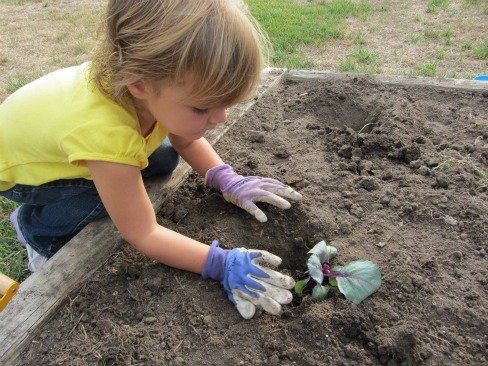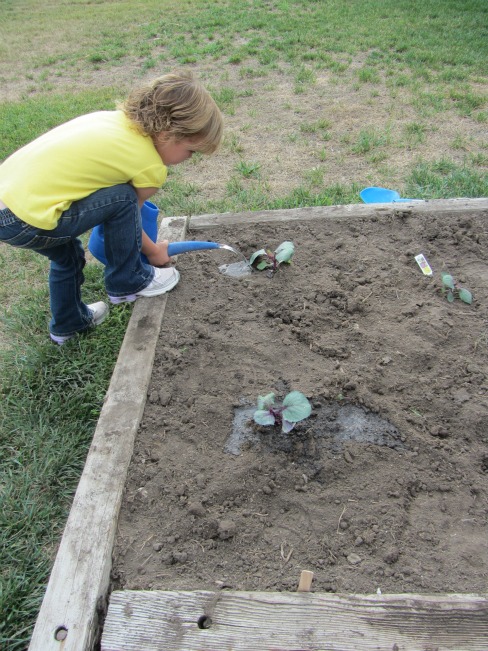Here’s to fall! I have had enough of this summer! How about you? Depending upon where you live, your garden season may not have been as dry and hot as ours. Consider yourself lucky. The daily temperature still feels like summer but now is the time to talk about extending our growing season and planting a fall garden.

Here are a few steps you can take to get going:
- Involve the family! Get them excited and ready to start digging!
- Find the right spot. If you garden in a small backyard like mine, space is limited. I actually have an entire bed open because my green beans failed to germinate (yes, even a master gardener fails at growing things – green thumbs do not become green overnight. Brown thumbs turn green because the gardener didn’t give up and tried again). If you do not have an open garden spot, you may have to remove some plants that are nearing the end of their production. If you don’t want to give up plants, fall gardening may not be the best option for you.

- Decide what to plant. Your choices come from the cool season crops. Such as broccoli, cauliflower, cabbage, Brussels sprouts, beets, carrots, and lettuce. We planted broccoli and cabbage transplants and lettuce and carrot seeds. If this is your first fall garden and you’re not sure what to plant, check with the local garden center or your county extension agent.
- Nourish the soil. Prepare the seed bed by breaking up the soil, loosening it, and making it soft for the transplants and seeds. Give your plants a rich start by replenishing the soil with the big three macronutrients: nitrogen, phosphorous, and potassium (NPK!). We added a slow release fertilizer to the bottom of each transplant hole. Where we planned to sow the carrot and lettuce seed, we incorporated a 10-10-10 granular fertilizer.
- Plant. When sowing seeds in the fall, planting depth should be a little bit deeper than in the spring. Planting a little deeper provides cooler damper conditions for seed germination.
- Keep the soil moist. It’s difficult to get seeds to germinate in high temperatures without an adequate amount of water (remember my green bean failure). For me, it means that I am watering three to four times a day. I will continue this until they germinate, hopefully for just a few more days.

- Watch. Watch for insects that will prey on your tender plants. Insect pressure seems to be higher in the fall.
- Wait and enjoy. Enjoy the cooler temperatures that fall brings and wait for your fall crop to ripen, hopefully before the first frost!
It’s rewarding to feed my family late into fall with garden fresh produce. I hope you can enjoy the same benefits too.





